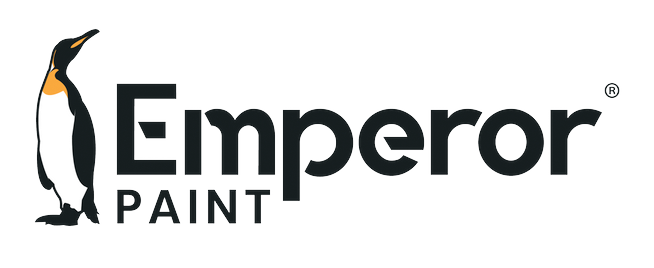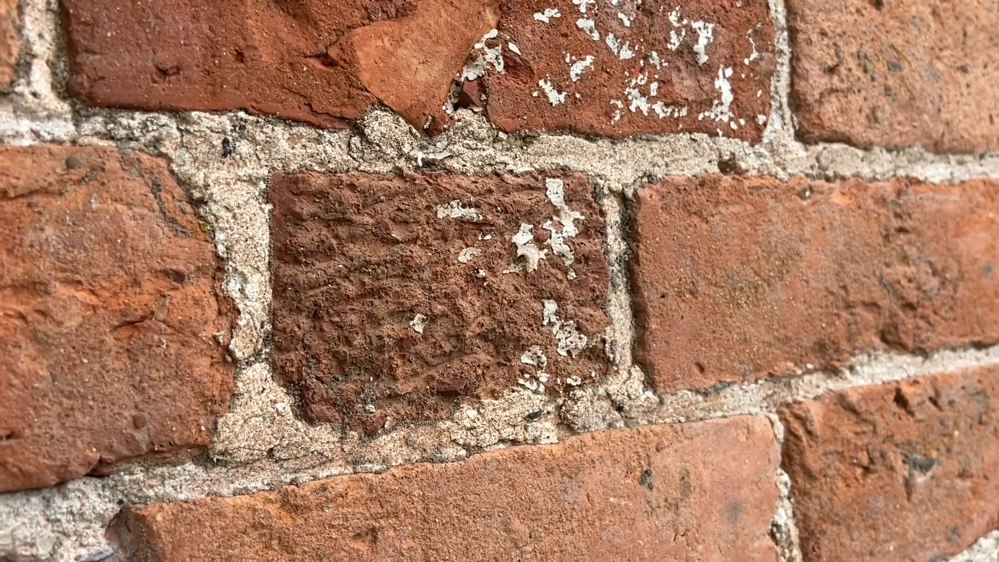
It may come as a surprise to hear but preparation is the single most important aspect of any decorating project. We are extremely proud of our products, however they are only as good as the surface they are being applied to. That is why it is crucial to take the necessary steps to prepare the wall before you do anything else.
Why Is Preparation Important?
Proper prep is key to not only beautiful results but also a finish that stands the test of time. Preparation ensures you have the best possible surface for the paint to stick to. If you do not prepare the surface for painting, there are two main problems that can be caused. Firstly, the surface could allow moisture to get into any defects such as cracks, which negates the benefits that our super hydrophobic technology achieves. Secondly, the paint could simply fail altogether if the surface is not prepped correctly, as it needs to be able to adhere to a clean and sound surface.
How To Prepare Exterior Walls
So, what is involved in preparing exterior walls before you paint them? Well, there are a number of steps you need to take, which can vary depending on the surface and the product you are using.
At this point it is important to point out that while Emperor Masonry Creme and Emperor Masonry Paint are applied differently, much of the preparation is the same. There are some key differences, such as priming, but we will cover that.
Preparation involves three steps; cleaning, repairing and priming (if required). Each one is as important as the next, so don't cut any corners as it could come back to bite you later on.
1. Cleaning
No matter whether you are applying Emperor Masonry Paint or Emperor Masonry Creme, the cleaning process is the same.
Cleaning ensures exterior walls are clean and free from dirt, debris or contamination. At the end of the day, you want the paint to stick to the wall not a layer of dirt! Cleaning not only ensures the product you are applying can perform, but also ensures the wall looks its best. In the case of Emperor Masonry Creme, this is a clear product, so you don't want any dirt on the wall that will be left for all to see.
Cleaning is a two-step process. Firstly, wash the masonry down with a pressure washer, hosepipe or a stiff brush and hot water. This removes the surface level dirt so that there is nothing that can stop the paint from adhering to the wall.
If you are using a pressure washer, ensure you use a low pressure to avoid causing any damage to the wall. Furthermore, on lime render and sandstone, we recommend cleaning these with a steam cleaning process. This is because both of these surfaces are highly porous, meaning they will absorb a large amount of moisture. If a steam cleaning process is not feasible, a stiff brush should be sufficient for removing small amounts of dirt.
The second part of the cleaning process is to apply Emperor Masonry Cleaner where there are problems with organic growth, such as mildew, lichens and algae. This is what is called a fungicidal wash, which kills any fungus. If this organic growth is not killed, it could continue to bloom on the wall after treatment. Simply apply the cleaner to the wall using a brush, roller or pump-sprayer and allow this to dry for 2-3 hours at 20°C. Once dry, wash the cleaner off the wall to remove any residue if you are using Emperor Masonry Creme, or you can leave it on the wall if you are using Emperor Masonry Paint.
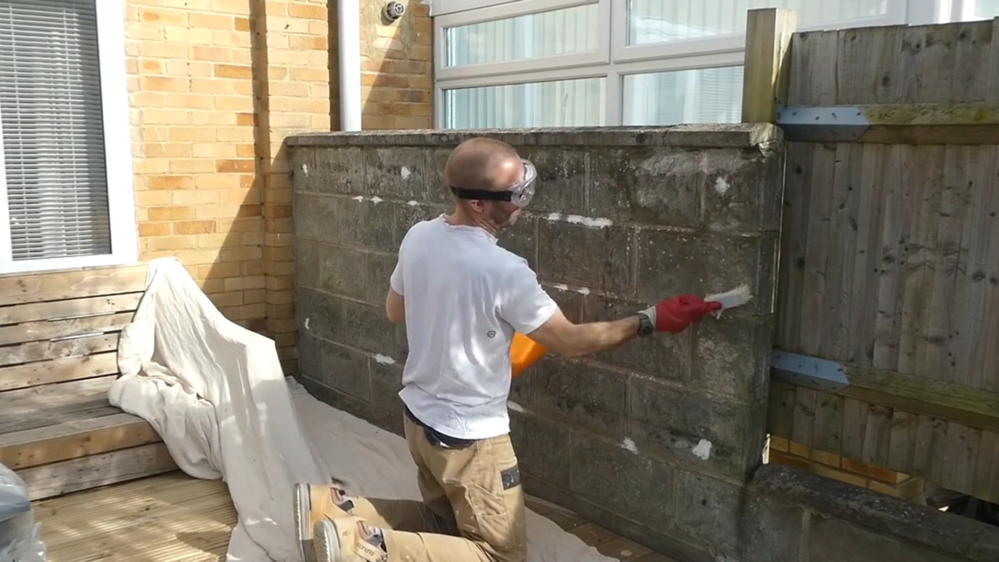
2. Repairing
The surface you are painting or treating must be sound. Water will find its way into any holes or cracks, so making sure it is watertight is crucial for long-term protection.
Start by checking the surface is sound. If you have a rendered wall, tap the surface to see if there are any signs of delamination or detachment from the wall. If the render sounds hollow, this is a sign it isn't adhered to the masonry beneath and could need to be hacked off and repaired.
If there are any holes or cracks these should be repaired. A masonry repair filler will be effective at filling any cracks on the masonry. After raking out the crack to remove any loose debris, simply work the filler back and forth into the defect using a filling knife and once dry sand back to your desired finish using 180-grit sandpaper.
Finally, let's address any previous paint that is applied to the wall. If you are using Emperor Masonry Creme, you must remove all previous paint as this is only for use on bare masonry surfaces. If you are using Emperor Masonry Paint, you do not need to remove sound previous paint, you only need to remove any failing paint. Scrape the failing paint back using a paint scraper until you have a 'firm edge', where no more paint can be removed. To make the edge as smooth as possible simply sand this back using a low grit sandpaper.
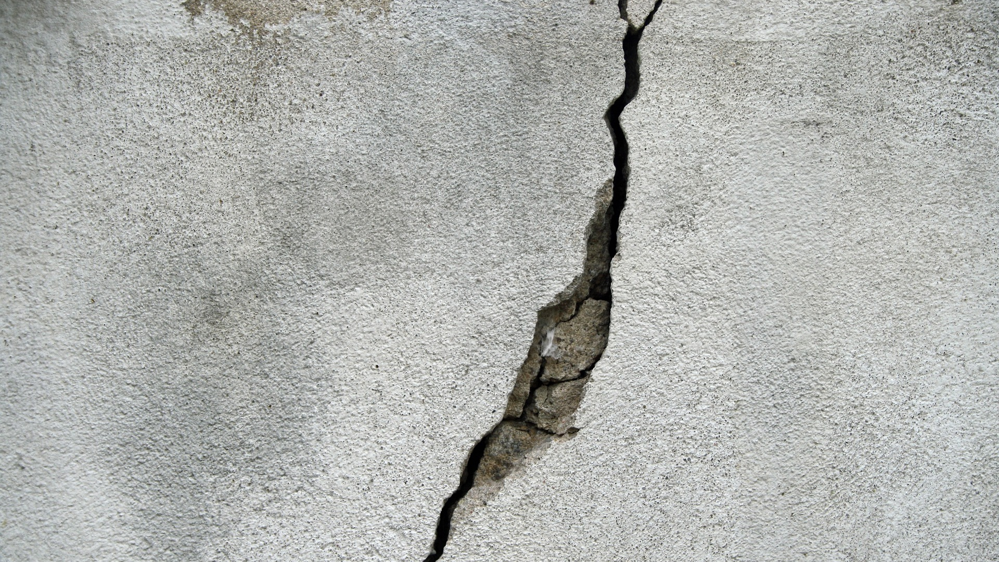
3. Priming
Now to the final part of the preparation process, priming! Priming is something that must be done when applying a coloured paint to a bare, unpainted surface. The job of a primer is to prevent the paint from soaking into the masonry, which causes you to lose coverage and opacity. It also helps the paint adhere to the wall, creating a strong bond for long-term durability.
You do not need to apply primer to a surface that has previously been painted or a pre-coloured render, as the paint already on the surface of the wall will prevent the primer absorbing into the surface and adhering. You can simply apply Emperor Masonry Paint straight to the previously painted surface once they are cleaned.
You also do not need to apply primer if you are using Emperor Masonry Creme. This is because this is a clear treatment that absorbs into the masonry to offer an invisible finish. Applying primer first would prevent the treatment absorbing into the masonry.
If you are applying Emperor Masonry Paint to a bare surface that hasn't been painted, priming is a must. Make sure the masonry is dry and that conditions are above 5°C before you apply primer.
Simply apply one-coat of Emperor Exterior Primer to any bare areas using a masonry brush or a long-pile roller. You can expect to achieve a coverage of between 5-8m2 per litre, depending on the porosity of the surface. If you have a number of isolated bare areas where you have removed peeling previous paint, apply the primer only to these areas.
Allow the primer to dry for 3-5 hours at 20°C, or for longer at lower temperatures, before you apply the masonry paint. Drying times are essential for the performance of the wall, so make sure to give the primer plenty of time to dry.
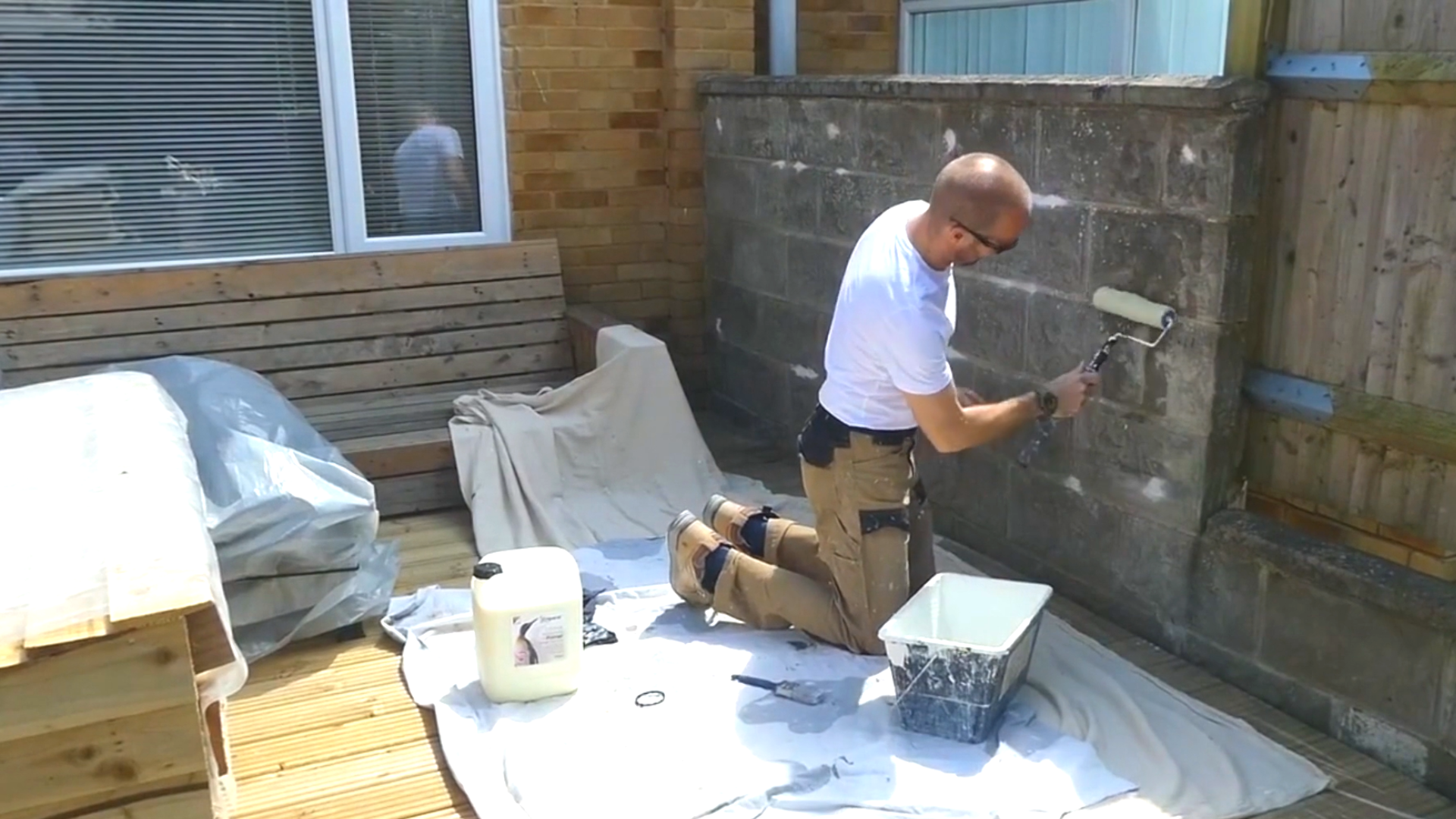
4. Creating a textured finish
Creating an attractive, even finish can be difficult, especially in areas where repairs have been made due to cracks etc. Repairing these surfaces can often leave scarring or patches on uneven textures which can stand out badly.
To help with this we developed Emperor Textured Basecoat which has been specially designed to create a wide range of textured finishes easily and effectively. Any texture from light to rough can be created using various textured rollers, allowing you to mask imperfections and create a uniform textured finish without the need for costly and time-consuming rendering work.
Crucially, Emperor Textured Basecoat is highly breathable and contains our advanced nano-technology, meaning it it fully compatible as a basecoat with Emperor Masonry Paint as a topcoat.
You can apply the basecoat directly to previously painted surfaces or bare surfaces that have been primed using Emperor Masonry Primer.
Generously load your chosen textured roller with the basecoat and simply roll over the surface of the wall. If using a brush, just brush the product on until you achieve your desired finish. Avoid spreading too thinly as you will lose the texture you have created. You can expect to get a coverage of 350-500g per m², which will depend on the level of texture you are applying. Allow to dry for 24 hours before overcoating with Emperor Masonry Paint.
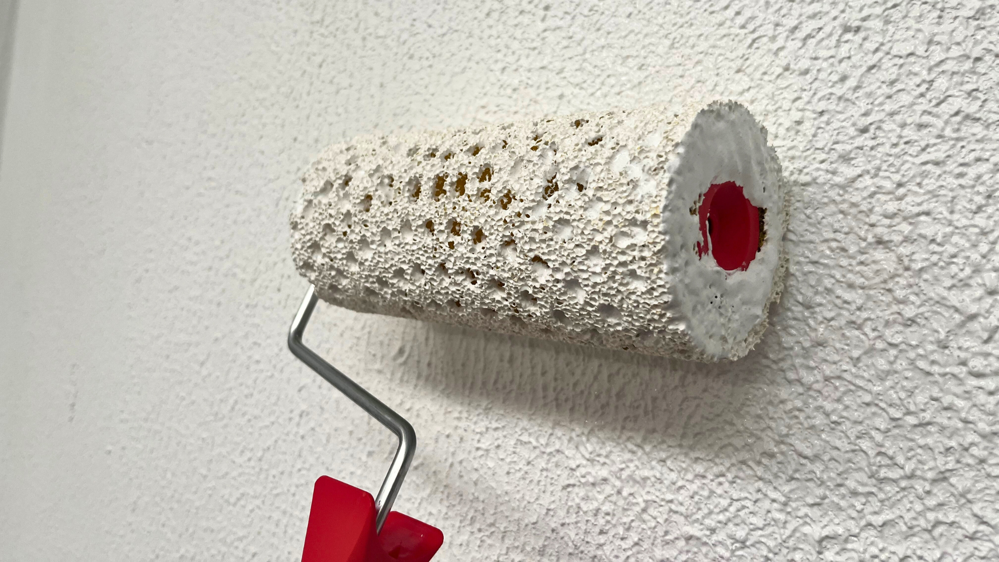
Frequently Asked Questions
Q. WHAT HAPPENS IF I APPLY PRIMER TO A PREVIOUSLY PAINTED WALL?
If you apply primer to a previously painted wall, that paint will stop the primer soaking into the surface and cause it to simply wash off. That is why we recommend spot priming bare areas of masonry if there is a mix of both bare and painted areas of a wall.
Q. WHAT FILLER SHOULD I USE TO REPAIR FILLER?
You can use any exterior filler in order to prepare walls before treatment. We recommend using a high-quality exterior filler such as Toupret Masonry Repair Filler, which will provide a solid bond to the wall to prevent any future problems occurring.
Q. WHAT HAPPENS IF I DON'T PRIME A BARE SURFACE BEFORE PAINTING?
If you do not prime bare masonry before applying Emperor Masonry Paint, a number of things can occur. Firstly, the first coat of paint that you apply could simply soak through into the porous masonry instead of creating a film of paint of the surface. This could result in you requiring more than two-coats of paint. Furthermore, if the surface is chalky, the adhesion of the paint could be compromised. Emperor Exterior Primer can help to bind chalky surfaces, preventing any problems with failing paint.
Q. DO I NEED TO APPLY EMPEROR EXTERIOR CLEANER AND EMPEROR EXTERIOR PRIMER TO QUALIFY FOR THE LIFETIME GUARANTEE?
Our lifetime guarantee covers both Emperor Masonry Paint and Emperor Masonry Creme and ensures that both products will not fail in your lifetime if applied correctly. The key to applying the products correctly is the preparation, which is why we always say this is the most important aspect of exterior decorating.
Let's first talk about Emperor Exterior Cleaner and whether it is a requirement or not. To qualify for our lifetime guarantee, you only need to use Emperor Exterior Cleaner on all areas with visible organic growth. If there is no visible growth, simply clean the wall to remove any dirt and debris using a hosepipe or stiff brush and water. Not all organic growth is visible however, which is why we always recommend applying Emperor Exterior Cleaner to the full wall. While this isn't a requirement for the guarantee, it does ensure you have full peace of mind knowing the surface is free from fungus and that there is nothing that can bloom underneath the paint film. After all, it is better to be safe than sorry.
In terms of Emperor Exterior Primer, this is a requirement for any bare masonry surfaces in order to qualify for the lifetime guarantee, when using Emperor Masonry Paint. It is not a requirement and therefore not recommended if you are applying Emperor Masonry Paint to a previously painted surface where the paint is sound or if using Emperor Masonry Creme. For full details read our guide to lifetime guarantee
We hope we have answered any questions you may have had regarding how to prep exterior walls. If you have any other questions our team of experts are on hand to assist you no matter your problem. Contact them today by emailing info@emperorpaint.co.uk or calling 0161 509 9009. Alternatively, shop Emperor Masonry Paint or Emperor Masonry Creme today and get free next working day delivery on all orders over £50.

